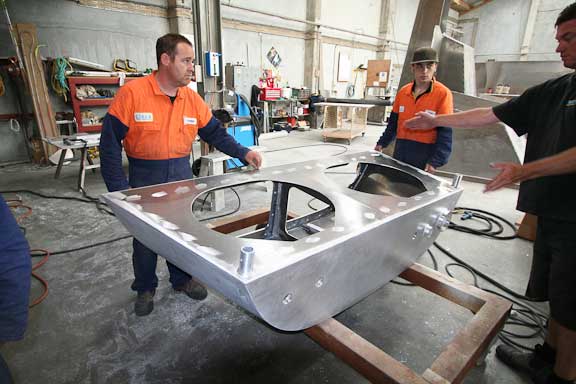
Within the next few days FPB 64 #3 will be ready to start sea trials. As she is being fitted with a swim step extension we are all awaiting the real world results from this small, but potentially potent addition.
The initial design has been done so the same approach can be used with the other 64s.
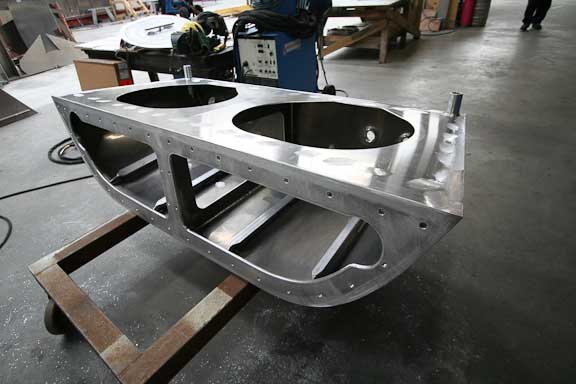
This is looking at the forward face of the extension which mates to the existing transom.
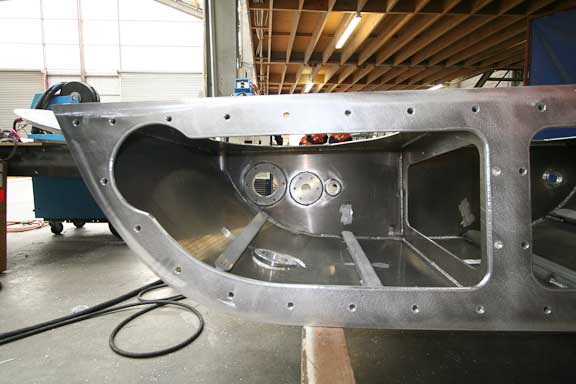
A detail looking inside. Note the base for a stern depth transducer.
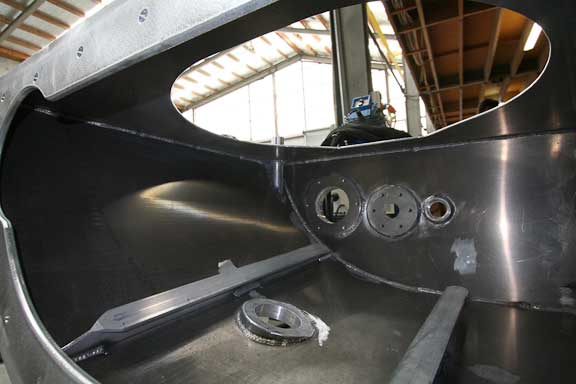
There are many times we wished we could read depth of the stern as well as the bow. But the risk of a leak in the engine room was not appropriate. Now, with any transducer leaks contained in the extension we are able to fit the aft transducer and not have the worry that otherwise would go with it.
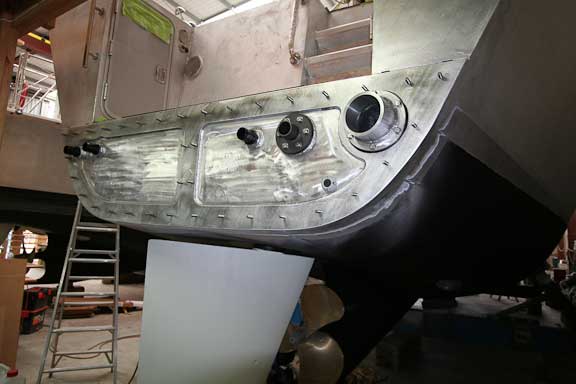
Retrofitting is, of course, more complicated than when you know this is coming from the beginning. In this case Circa are extending the various exhausts which protrude from the existing transom. The extension then bolts up to the studs projecting from the plate which has been welded on to the transom.

January 25th, 2011 at 3:52 pm
Clever. I presume the extension will be a water-tight structure? What would happen if it should be flooded?
January 25th, 2011 at 4:54 pm
Yes Rick, it is watertight. If it were flooded it would have minimal impact on trim.
January 25th, 2011 at 4:28 pm
Steve,
Did you consider installing the transducer so that it transmitted through the metal hull. I’ve installed a transducer in a non-cored fiberglass hull that worked just fine? Have heard of putting the transducer in mineral oil, but I expoxied it directly to the hull and had good acoustic coupling.
Cheers,
Roger Arrowood
January 25th, 2011 at 5:08 pm
Hello Roger:
I don’t think the transducer would work through the metal hull.
January 25th, 2011 at 4:58 pm
Thanks. Any scope for storage in it?
January 26th, 2011 at 5:33 pm
Hi Rick:
There are two large access hatches, so yes, storage is possible.
February 8th, 2011 at 9:11 pm
Roger;
Airmar, who actually manufacture the depth transducers used by most marine electronics brands, do not recommend using their in-hull type models with an aluminum hull thicker than 0.38mm/0.150”. As the thickness of the bottom plating used for the FPB 64’s hull and transom extension (12.0mm/0.472” and 6.0mm/0.236”, respectively) far exceeds this, a thru-hull type transducer is dictated.
February 9th, 2011 at 11:56 am
Brian,
Thanks for checking with Airmar. I’d like to avoid a debate in this forum, and I’m sure putting the transducer in the hull extension will work out great. Having said that, if the transducer is a secondary depth sounder for the aft end of the hull you might not be looking for 100% performance out of the transducer/depth sounder, which Airmar has to be concerned about, you would be looking for depth, comparatively shallow depth. Metal is an excellent transmission medium for ascoutic frequencies, better than sea water, but does attenuate the signal. The transitions between transducer, mineral oil (or epoxy), metal and then to water with the resultant coupling losses and reflections probably cause more of the signal loss than thickness of the metal. My original comment was only that for the performance you might be looking for it didn’t seem to justify not trying an engine room install on an FPB64 without the hull extension. It is certainly a judgement call and your and Steve’s judgements have resulted in a truly outstanding design. When I win the lottery we’ll give it a try on my FPB64. Cheers, Roger